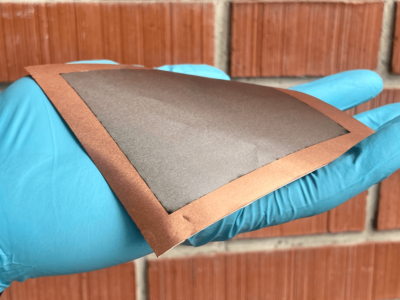
The researchers, working at the Max Planck Institute for Chemistry in Mainz and the Johannes Gutenberg University Mainz (Germany), observed that hydrogen sulfide (H2S) becomes superconductive at -70°C when placed under a pressure of 1.5 million bar – half the pressure of the earth’s core. Previously, the only known materials to offer superconductivity have done so only at very low temperatures – about -140°C for special copper ceramics and at least -234°C for conventional superconductors.
The researchers used a special pressure chamber device less than one cubic centimeter in size to compress the H2S – which is a gas under normal conditions – into a superconductor. Two diamond tips on the side of the apparatus act as anvils, which are able to constantly increase the pressure that the sample is subjected to, while contacts on the device measure the electrical resistance of the sample.

“With our experiments we have set a new record for the temperature at which a material becomes superconductive,” says Mikhael Eremets who led the team at the Max Planck Institute. "There is a lot of potential in looking for other materials in which conventional superconductivity occurs at high temperatures. There is theoretically no limit for the transition temperature of conventional superconductors, and our experiments give reason to hope that superconductivity can even occur at room temperature."
While such high-temperature conventional superconductivity from certain substances had been previously predicted, this is the first experimental proof of a conventional superconductor with a high transition temperature. The researchers are now looking for materials with even higher transition temperatures.
"An obvious candidate for a high transition temperature is pure hydrogen," says Eremets. "It is expected that it would become superconductive at room temperature under high pressure."
The team has begun experimenting with pure hydrogen, but faces difficulties with the very high pressures involved – i.e., as much as three to four million bar. For more, see the paper in the journal Nature: "Conventional superconductivity at 203 K at high pressures."
Related news articles:
Is a room temperature superconductor possible?
Practical compact fusion reactor proposed by MIT
 If you enjoyed this article, you will like the following ones: don't miss them by subscribing to :
eeNews on Google News
If you enjoyed this article, you will like the following ones: don't miss them by subscribing to :
eeNews on Google News




